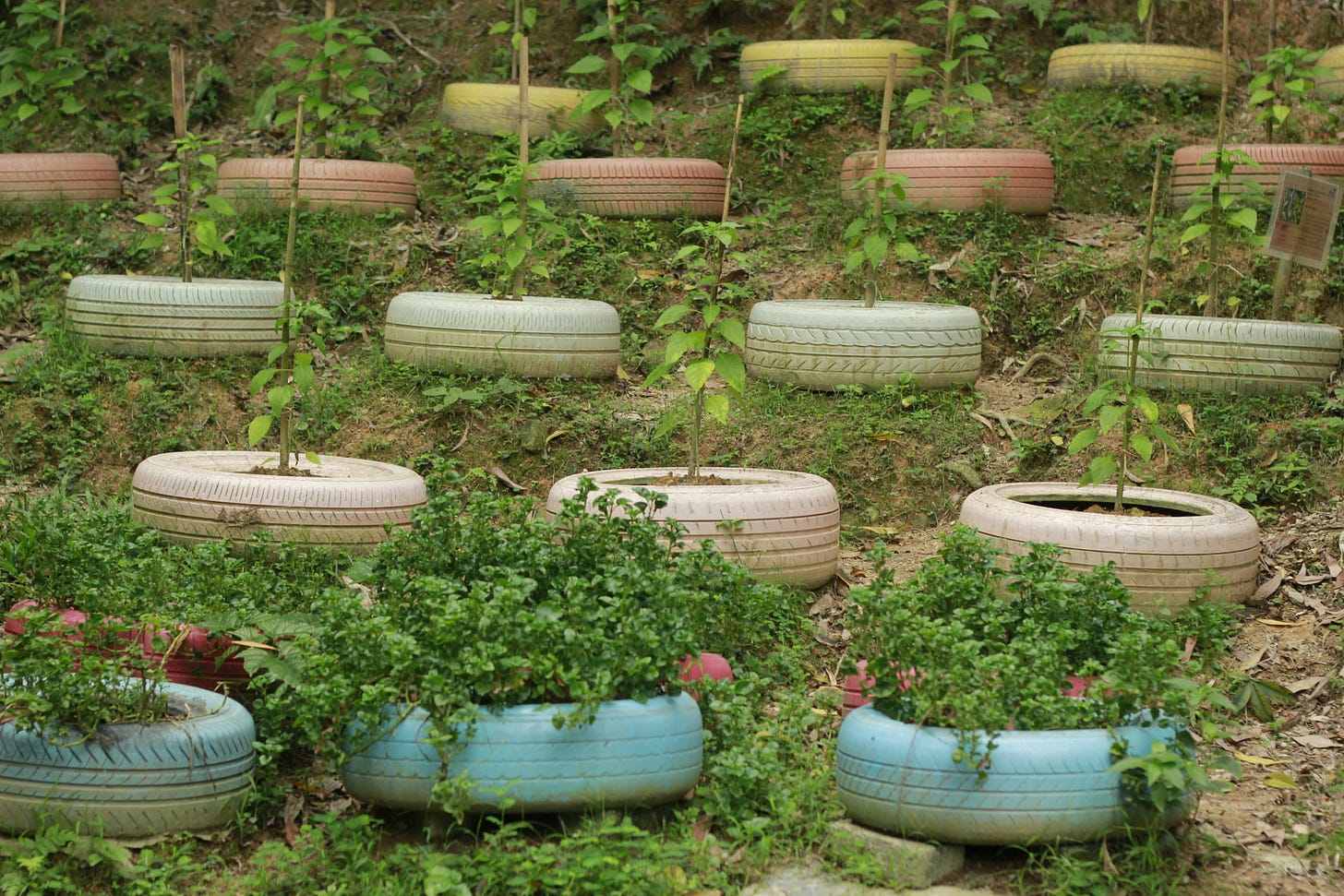Reducing PFAS Exposure from Food
Practical guidance about ingesting fewer 'forever chemicals,' and research on PFAS risks in foods

Food is a major path by which per- and polyfluoroalkyl substances (PFAS) enter our bodies. Since nearly all Americans now have some of these pernicious chemicals coursing through their veins, it makes sense to minimize ingesting them. The most effective and efficient means to keep PFAS out of foods would be through wholesale chemical reform, but governmental regulations are not keeping pace with the continued production of PFAS. In the interim, consider taking what precautionary measures you can.
Avoid non-stick cookware; use stainless steel, seasoned cast-iron, glass or ceramic pots and pans instead.
Steer clear of food packaging that may contain PFAS, such as microwavable popcorn bags, fast-food and takeout containers, sandwich wrappers and coated pizza boxes. Rely on reusable glass containers instead. (Some restaurants will pack takeout food in glass containers when requested.)
Minimize use of plastic storage containers, some of which contain PFAS (and many other problematic chemicals).
Contact your state’s fish and wildlife agency to learn if there are PFAS-related advisories for fish or game consumption. Be aware that not all states have issued advisories despite potential threats and that testing for potential advisory sites is limited. Avoid eating fish and game harvested from areas near known contamination sources.
If you compost, add only food and yard waste. Avoid “compostable” packages or other manufactured items that may contain PFAS (unless they are BPI-certified).
Avoid buying bagged or bulk compost from sewage sludge (often labeled “biosolids,” “residuals,” or “municipal waste”). To learn more, read Sludge in the Garden, produced by the Ecology Center (in Michigan) and the Sierra Club.
Certified organic foods are not necessarily free of PFAS due to the chemicals’ long residence time in soil and water. Ask producers whether they have tested soil and water for PFAS.
Learn more about food products’ organic fluorine count (a marker of the PFAS present) through the scientifically reviewed postings of consumer advocate Leah Segedie on her “Mamavation” website.
To find out about the work of major grocery chains to reduce consumer exposure to toxic chemicals, including PFAS, review the “Retailer Report Card” site maintained by the nonprofit Toxic Free Future.
Research: PFAS Risks in Fish, Seafood and Eggs

A New Hampshire study published last month found that higher levels of fish, seafood and egg consumption were associated with increased PFAS levels in the blood plasma of pregnant women. The results reinforce data released by Michigan earlier this year in which higher PFOS levels in blood serum were associated with eating more wild-caught fish or deer meat.
Both findings echo a 2020 risk assessment by the European Food Safety Authority, which concluded that consuming fish, meat, fruits and fruit products, and eggs and egg products may contribute to PFAS exposure. To protect public health, European Union (EU) member states subsequently adopted a regulation setting maximum contaminant levels for a subset of PFAS in meat, fish, shellfish and eggs (and foods containing them as ingredients).
The U.S. government has not set any such maximum contaminant levels for PFAS in American foods to date, and among states, only Maine has begun this process.
Federal agencies have not even undertaken adequate testing, judging from what Maine has found on farms and a limited check of milk by Consumer Reports published earlier this year. Six of the 50 samples it tested had PFAS levels that would trigger an investigation in EU member states.
“The agencies say they’re not finding [PFAS], but that’s because they’re not looking for it in a targeted, systematic way,” CR’s senior staff scientist Michael Hansen noted: “They should be using more rigorous methods that can detect at lower levels. They should particularly pay attention to areas where sewage sludge has been known to have been used... The more they look for contamination, the more they will find it—that’s what it takes to deal with this.”
The New Hampshire study also found that greater intake of coffee and white rice during pregnancy was associated with higher concentrations of five PFAS compounds (PFHxS, PFOS, PFOA, PFNA and PFDA) in human milk. Exposure to chemicals such as PFAS in the critical development period from conception to age 2 can set the stage for lifelong health outcomes, potentially affecting growth and obesity, cognitive and behavioral outcomes, metabolic and cardiovascular health, and gut microbiota, explains study co-author Dr. Rachel Criswell, who practices family medicine in Maine.
This study was among the first to assess PFAS levels in relation to eating behaviors, which can shift during pregnancy (such as increasing intake of dairy and decreasing intake of caffeine, alcohol and meats). The authors observed that “future studies need to take account of exposure to environmental pollutants in addition to nutrient benefits of certain food[s].”
"In the meantime, pregnant people and families can minimize the health risks associated with chemical exposure by reducing dietary exposure to chemicals,” Criswell notes. “Measures that can help,” she adds, “are following local and state "do not eat" advisories (for wild-caught foods), eating organic foods where possible, avoiding microwaving food or beverages in plastic, and using glass, stainless steel, or cast iron rather than plastic or non-stick cookware for heating and storing foods.”
News of Note
Tires-to-table eating is the subject of a new study and Civil Eats story about the detection of tire additives in store-bought leafy vegetables (as tires wear, particulates from them enter air, waters and soil).
There’s work underway to limit another major source of microplastics: single-use plastics. The largest buyer of consumer goods—the U.S. government—plans to phase out single-use plastics, but as Marianne Lavelle writes in Inside Climate News, there’s no federal push to slow plastic production—despite projections that it could increase four-fold by 2050.
“Amidst the global plastic pollution crisis, the gastrointestinal tract serves as the primary entry point” into us for micro- and nanoplastics (MNP), Austrian and German researchers write in a newly published study that links these materials to colon cancer metastasis. An overview of the study appears in the Food Packaging Forum, which also notes a disturbing study that traces where MNP go inside us, with some dynamics similar to PFAS—binding to blood proteins and accumulating in the spleen and liver.
Hakai magazine summarizes a Cornell study (mentioned in the last newsletter) with graphics showing where microplastic ingestion and inhalation is highest around the world, and how fish are a dominant source of microplastics.
Skin absorption of PFAS, a neglected area of research, features in a new study involving 3-D modeling that concludes “dermal exposure could be a significant source of exposure for some PFAS, especially shorter-chain PFAS.”
A federal appeals court dismissed a lawsuit brought by Chemours (a spinoff of DuPont that focuses on chemical production) challenging a drinking water advisory for PFAS that the U.S. EPA issued in 2022. Earlier this summer, chemical companies sued to block the EPA’s new rule setting a PFAS drinking water standard.
A bill just introduced into both the Senate and House would help provide more PFAS health guidance, with the National Academies of Sciences, Engineering, and Medicine or another entity making recommendations on the health effects of measurable PFAS. and updating those periodically.
Good Resources
Staying on the food theme, the podcast “What You’re Eating” headed to Maine for an hour-long program about PFAS threats to agriculture—featuring some of the people who will be appearing in my book.
If you ever buy bagged compost, watch this 30-minute investigation into the PFAS found in sludge-based compost (from Montana PBS Reports Impact).
Thanks for reading! This is a combined July/August issue because I’m approaching a deadline on my book manuscript. Come September, I’ll have another issue back in your inbox . Enjoy the rest of summer.




